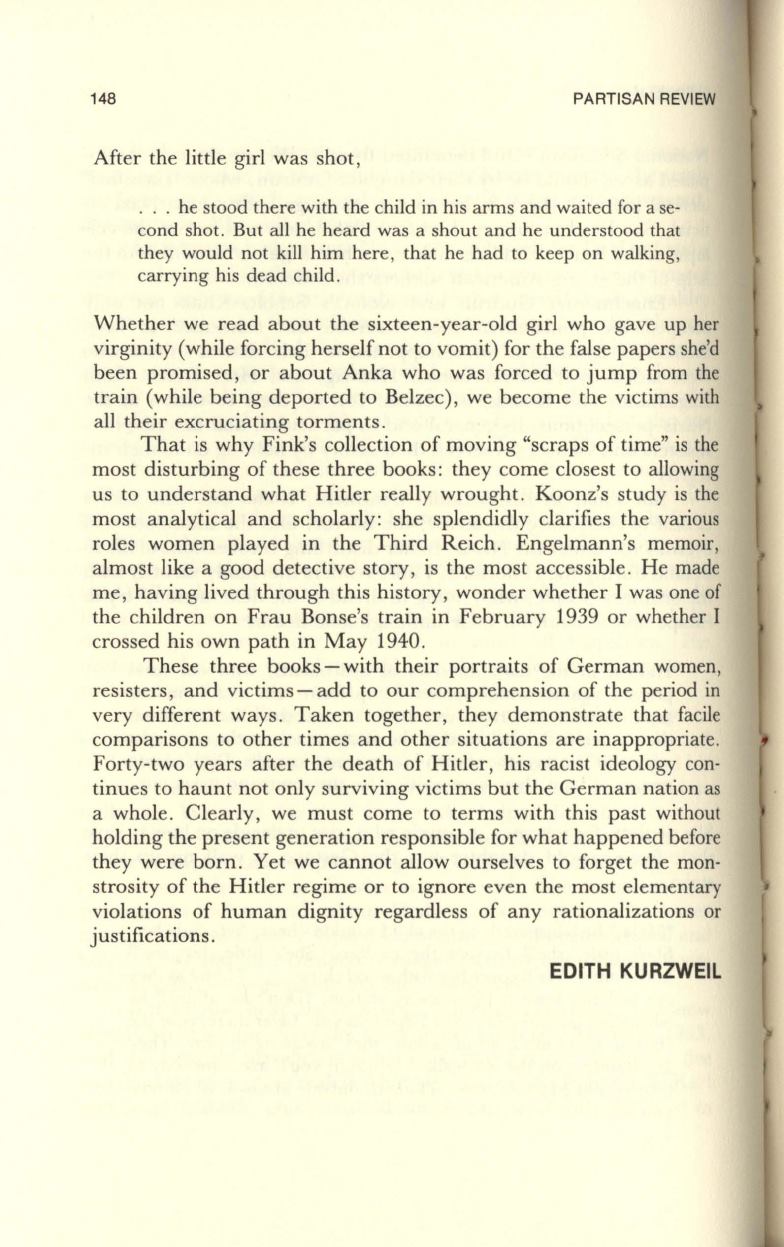
148
PARTISAN REVIEW
After the little girl was shot,
... he stood there with the child in his arms and waited for a se–
cond shot. But all he heard was a shout and he understood that
they would not kill him here, that he had to keep on walking,
carrying his dead child .
Whether we read about the sixteen-year-old girl who gave up her
virginity (while forcing herself not to vomit) for the false papers she'd
been promised, or about Anka who was forced to jump from the
train (while being deported to Belzec), we become the victims with
all their excruciating torments.
That is why Fink's collection of moving "scraps of time" is the
most disturbing of these three books: they come closest to allowing
us to understand what Hitler really wrought. Koonz's study is the
most analytical and scholarly: she splendidly clarifies the various
roles women played in the Third Reich. Engelmann's memoir,
almost like a good detective story, is the most accessible . He made
me, having lived through this history, wonder whether I was one of
the children on Frau Bonse's train in February 1939 or whether I
crossed his own path in May 1940.
These three books - with their portraits of German women,
resisters, and victims-add to our comprehension of the period in
very different ways. Taken together, they demonstrate that facile
comparisons to other times and other situations are inappropriate.
Forty-two years after the death of Hitler, his racist ideology con–
tinues to haunt not only surviving victims but the German nation as
a whole. Clearly, we must come to terms with this past without
holding the present generation responsible for what happened before
they were born. Yet we cannot allow ourselves to forget the mon–
strosity of the Hitler regime or to ignore even the most elementary
violations of human dignity regardless of any rationalizations or
justifications.
EDITH KURZWEIL


